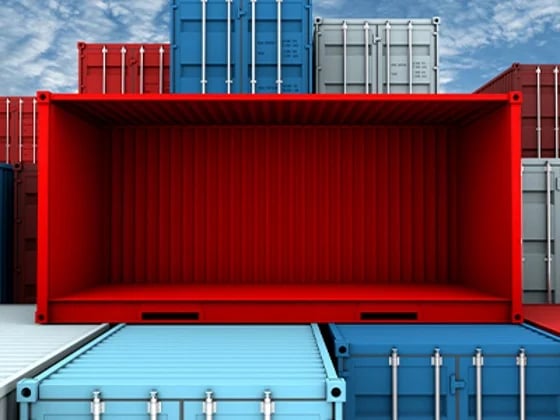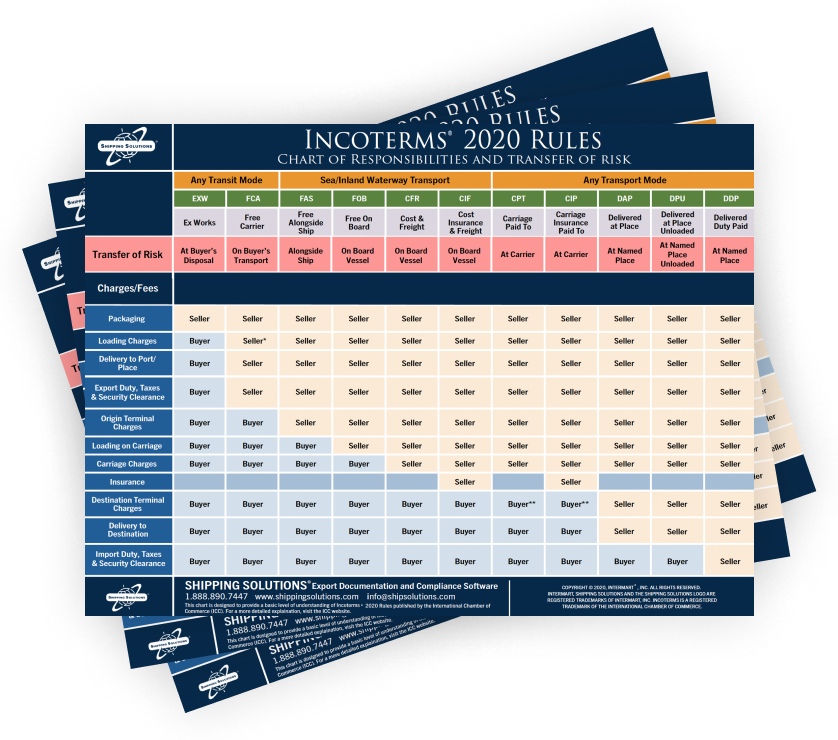The International Trade Blog International Sales & Marketing
Incoterms 2020 DPU: Spotlight on Delivered At Place Unloaded
On: March 21, 2022 | By:  David Noah |
4 min. read
David Noah |
4 min. read
 Incoterms 2020 rules are the latest revision of international terms of trade published by the International Chamber of Commerce (ICC). They are recognized as the authoritative text for determining how costs and risks are allocated to parties conducting international transactions.
Incoterms 2020 rules are the latest revision of international terms of trade published by the International Chamber of Commerce (ICC). They are recognized as the authoritative text for determining how costs and risks are allocated to parties conducting international transactions.
Incoterms 2020 rules outline whether the seller or the buyer is responsible for, and must assume the cost of, specific standard tasks that are part of the international transport of goods. In addition, they identify when the risk or liability of the goods transfers from the seller to the buyer.
In this article, we’re discussing the Incoterm DPU, also known as Delivered At Place Unloaded.
There are 11 trade terms available under the Incoterms 2020 rules that range from Ex Works (EXW), which conveys the least amount of responsibility and risk on the seller, to Delivered Duty Paid (DDP), which places the most responsibility and risk on the seller. The Incoterms 2020 Rules: Chart of Responsibilities and Transfer of Risk summarizes the seller and buyer responsibilities under each of the 11 terms.
For a summary of Incoterms 2020 and a short definition of each of the 11 terms, read An Introduction to Incoterms, or watch the video below.
Delivered At Place Unloaded (DPU) Responsibilities and Risk
Previously named Delivered at Terminal (DAT), this Incoterm has been renamed Delivered at Place Unloaded (DPU) because the buyer and/or seller may want the delivery of goods to occur somewhere other than a terminal, such as a construction site. Though it is the most obvious change to Incoterms rules, it is not the most significant.
Under the Incoterms 2020 rules, DPU means the seller is responsible for clearing the goods for export and bears all risks and costs associated with delivering the goods and unloading them at the named port or place of destination. The buyer is responsible for all costs and risks from this point forward, including clearing the goods for import at the named country of destination.
Delivered At Place Unloaded Transportation Options
The ICC has divided the 11 Incoterms into those that can be used for any mode of transportation and those that should only be used for transport by “sea and inland waterway.” Under Incoterms 2020, DPU can be used for any mode of transportation.
Using Delivered At Place Unloaded
This term is often used for consolidated containers with multiple consignees, and it is the only term that tasks the seller with unloading the goods. This is because if a delivery has multiple consignees, the seller can break down the shipment to make the goods available for them. Also, if items require additional or special handling that the seller agrees to be responsible for, they should select this term. However, this Incoterm may not be beneficial to the seller if unloading carries high risk, cost or complexity.
With DPU, sellers should be sure they have engaged someone at the destination to handle the goods to unload them. If they don’t want to be responsible for this step, they should use the DAP instead.
It may be helpful for new importers to choose DAP, because all they will need to set up is customs clearance.
Learn More about Incoterms 2020 Rules
If you are regularly involved in international trade, you need to understand the risks and responsibilities as defined by Incoterms 2020 rules, not just pick the term you always use. Start by getting a copy of ICC's Incoterms® 2020 Rules book.
For a more detailed understanding of which term or terms make the most sense for your company, register for an Incoterms® 2020 Rules seminar or webinar offered by International Business Training.
Read our articles about all of the other Incoterms 2020 rules here:
- EXW (Ex Works)
- FCA (Free Carrier)
- FAS (Free Alongside Ship)
- FOB (Free On Board)
- CFR (Cost and Freight)
- CIF (Cost, Insurance and Freight)
- CPT (Carriage Paid To)
- CIP (Carriage and Insurance Paid To)
- DAP (Delivered At Place)
- DPU (Delivered At Place Unloaded)
- DDP (Delivered Duty Paid)
If history is any indication, the Incoterms 2020 rules will be around until 2030. Now seems like the perfect time to make sure you understand each of the terms, so you can make sure you’re speaking the same language as your international trading partner.
Like what you read? Subscribe today to the International Trade Blog to get the latest news and tips for exporters and importers delivered to your inbox.
This article was first published in May 2017 and has been updated and revised based on the changes made with the release of the Incoterms 2020 rules.

About the Author: David Noah
As president of Shipping Solutions, I've helped thousands of exporters more efficiently create accurate export documents and stay compliant with import-export regulations. Our Shipping Solutions software eliminates redundant data entry, which allows you to create your export paperwork up to five-times faster than using templates and reduces the chances of making the types of errors that could slow down your shipments and make it more difficult to get paid. I frequently write and speak on export documentation, regulations and compliance issues.


